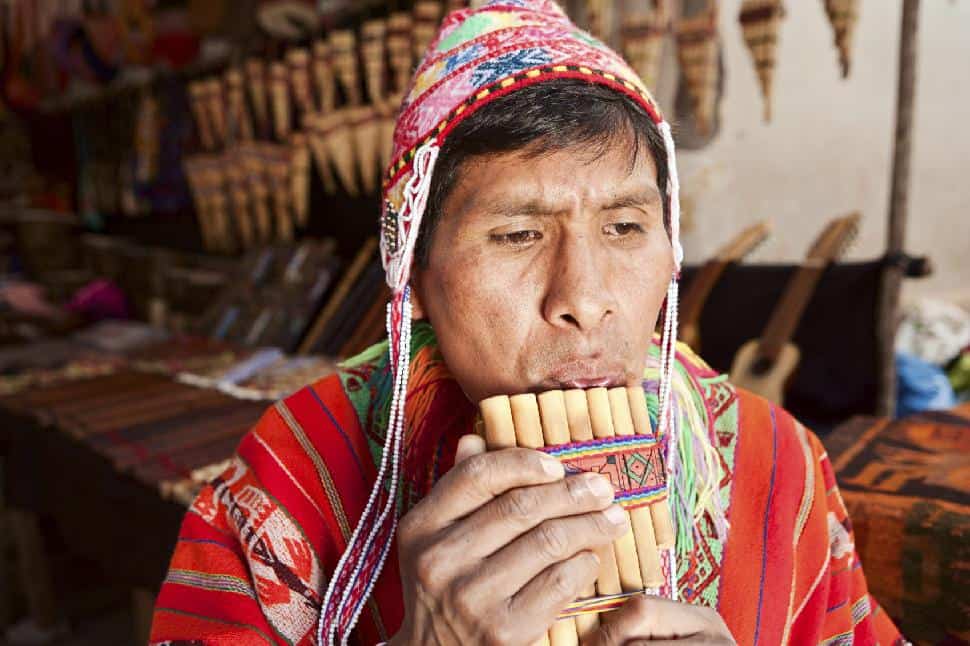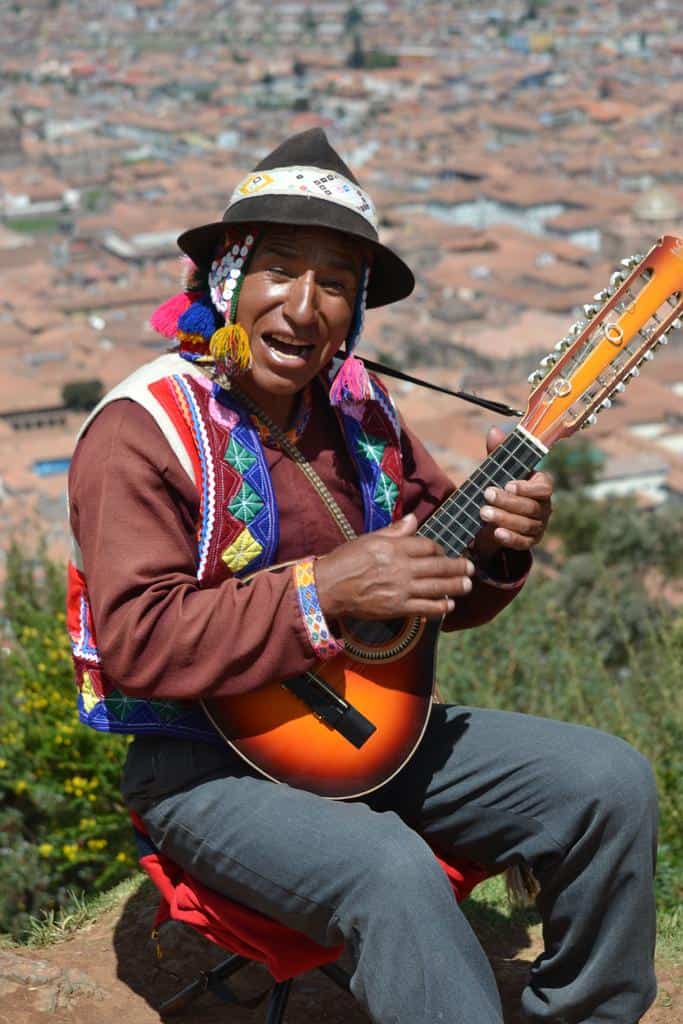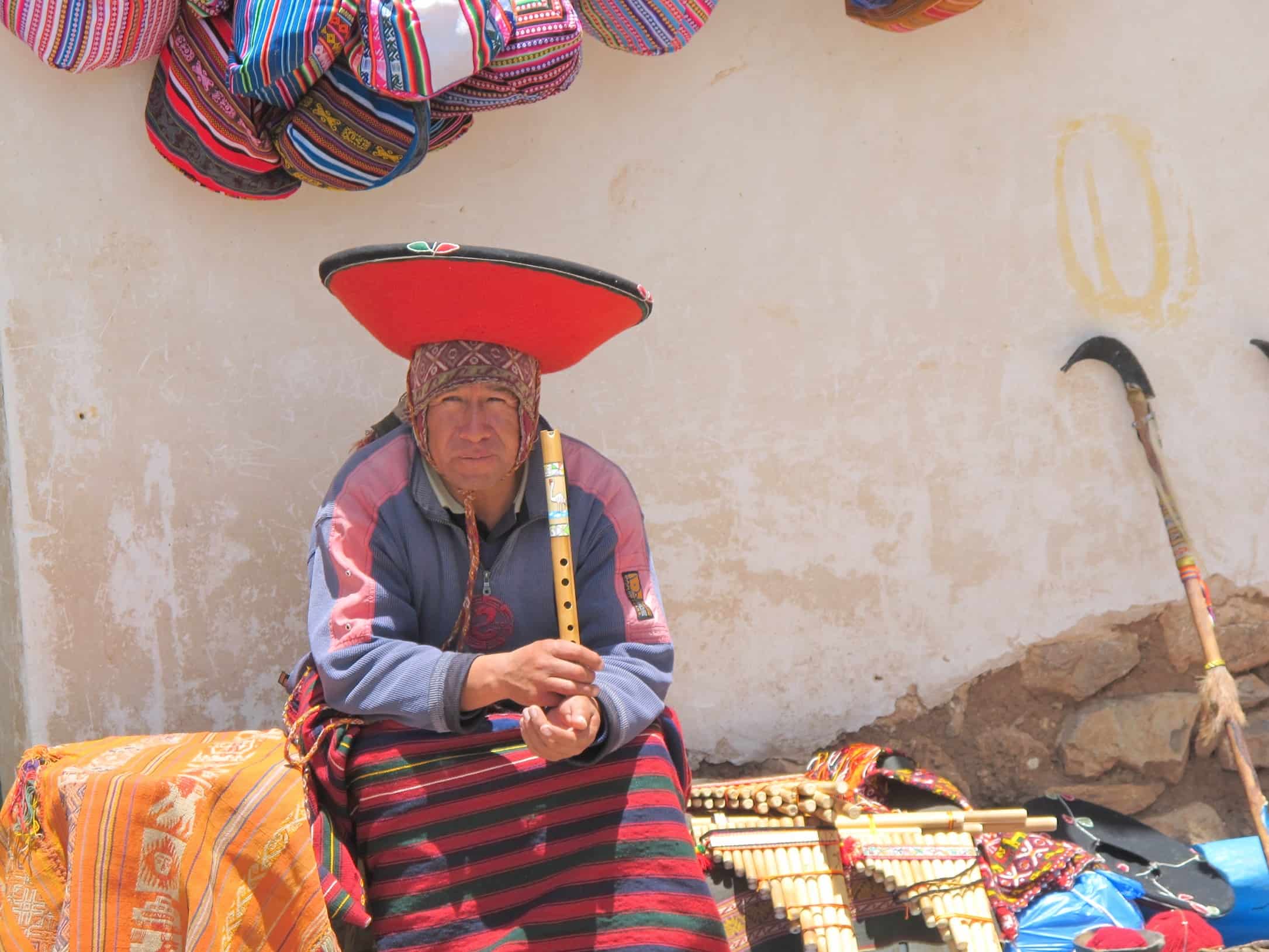Peruvians have a unique relationship with music, seeing at as integral part of life rather than something to be enjoyed from a distance. Most play some type of instrument and dancing is a part of nearly every celebration. When visiting Peru, listen for impromptu music popping up on street corners and try to pick out the different sounds and rhythms that define a region.
The music is a blend that reflects the history of the country. Andean, Spanish and African influences combine in different ways depending on the mix of the population in an area. Each group tends to dominate one style of instruments and the dependency of the music on that instrument creates an incredibly diverse range of sounds.
 https://www.flickr.com/photos/discovercorps/
https://www.flickr.com/photos/discovercorps/
The wind instruments are most commonly associated with the Andean population and bring with them the ancient melodies of the Quechuas, Aymaras and other people that made up the Incan Empire. The main instruments are: ocarina – a flute-like rounded vessel with finger holes, wakrapuku – a trumpet-like instrument often made of horn, pan pipes – almost like a miniature pipe organ played by blowing across open tubes of varying length, and flutes of various sizes and sounds. When the wind instruments are carrying the melody, the sounds invoke the ancient songs of the Andean people.
The stringed instruments are the most versatile and found in most parts of Peru. The national instrument, the charango, is similar to a small lute and was also used by the Andeans for centuries. The stringed design was soon adapted by Spaniards to play their melodies. Today the stringed instruments are often providing a Spanish flair to the tunes being played in addition to supporting the pipes.
 https://www.flickr.com/photos/holbrooktravel/
https://www.flickr.com/photos/holbrooktravel/
Although the Andeans did use percussion instruments, the cajon designed by African slaves is now a large part of Peruvian music and the rhythms are often straight from Africa. It is a large, box-like percussion instrument with a wooden playing surface rather than one made of skin. Andean drums resemble standard drums with one or two playing surfaces made of stretched animal skin. The wankara is a larger drum played by men, and the smaller tinya is used by women.
Music styles can be generally divided into highland (Andean) and coastal (Criollan) with the lowland music tending toward upbeat sounds and the music of the Sierras echoing the mournful wailing of the winds in the trees. Andean music is often what people mean when discussing Peruvian music. Wind and percussion instruments feature prominently although some regions also include the harp, violin and clarinet.
 "Marinera trujillo" by MaSii - Own work. Licensed under Public Domain via Wikimedia Commons
"Marinera trujillo" by MaSii - Own work. Licensed under Public Domain via Wikimedia Commons
Coastal music is heavily influenced by African and Spanish influence, creating unique versions of European styles of music. Here you’ll find versions of the waltz and the polka and that are only slightly related to their originating pieces. In pockets along the coasts you’ll find Afro-Peruvian music that is driven by percussion rather than melody. The strong, charismatic beat is accompanied by rhythm instruments similar to maracas instead of melodies, leading to carefree (and fun) sounds that invite dancing.


